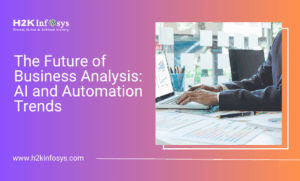Who is a Stakeholder?
A stakeholder is a person or a group of people or any other entity such as department(s), division(s) and customer(s) etc. who influence the result of a system/software or an application.
Objective of stakeholder analysis:
The main objective of stakeholder analysis is to help a Business Analyst to focus on the requirements and different expectations from multiple stakeholders of a system/software or an application. The very first task of a Business Analyst before conducting stakeholder analysis is to identify the stakeholders and mapping their needs.
A Business Analyst can repeat identifying stakeholders and understanding their expectations multiple times in a Software Development Life Cycle.
Stakeholder Identification Techniques:
There are two identification techniques widely used, to identify the stakeholders or stakeholder groups, which include:
- Self Identification
Self Identification technique involves a number of sub-techniques that include:
- Media Presentations
This technique allows higher officials and business analysts to disseminate information, newsletters and brochures about the proposed action to an audience. Now, the concerned people about the proposed action come to the officials to ask their questions and doubts. The details like the names, addresses and contacts of the people or groups are recorded and the stakeholders or stakeholder groups are identified based on the recorded data.
- Public Meetings
This technique allows the higher officials and business analysts to conduct public meetings about the proposed action. The details like the names, addresses and contacts of the attendees are recorded and later reviewed by the business analysts to identify the stakeholders or stakeholder groups.
- Staff Identification
Staff Identification technique mostly depends on the higher officials and business analysts. This also takes into consideration the available written materials to gain an insight for identifying the stakeholders. Along with the Self Identification technique, this technique uses some additional analysis techniques, for the identification of stakeholders, which include:
- Staff Information Analysis
This technique enables higher officials to provide the information of people, individuals and groups that may get affected by the proposed action. Based on the information provided, business analysts identify the possible stakeholders or stakeholder groups.
- Associations Analysis
This technique allows business analysts to examine the available lists of stakeholders and reference materials of the groups provided to identify the stakeholder groups. After careful review and based on the analysis of groups and organization, business analysts choose the relevant stakeholder groups.
- Historical Analysis
This technique allows business analysts to review historical data like reports, records, correspondence studies and projects to get the most out of these and identify the relevant stakeholder groups based on the produced information.
- Demographic Analysis
This technique allows business analysts to make use of demographic information like age, sex etc. to identify the stakeholder groups.
- Geographic Analysis
This technique allows business analysts to review geographic information and maps to be able to identify stakeholder groups.
Stakeholder Analysis Process:
Stakeholder Analysis is a process that allows a Business Analyst to identify how different groups or set of people are going to be affected by proposed project requirements. Business Analysts identify different stakeholders or stakeholder groups; use multiple scientific techniques and collect data to identify the impacts of the proposed requirements on stakeholder groups.
Post a thorough discussion and a decision process when an action has been proposed, an analysis is performed and presented to the higher officials. If the proposed action has been approved by the higher officials, this goes to the next stage of analysis with the stakeholder group. This analysis helps the decision makers to classify and interpret the data/information collected, and conclude at the end whether the proposed action should be implemented or not.
A stakeholder analysis can be simple or complicated based on the complexity of the action proposed and the potentially affected groups.
Stakeholder analysis is majorly based upon three basic principles that include:
- Complete identification of Stakeholder groups:
Business Analysts have to make sure that the stakeholder analysis process has been carried out successfully. The stakeholder analysis process must ensure that the stakeholder groups affected by the proposed action have been clearly identified by the Business Analysts else the findings will remain inaccurate and incomplete.
- Proper assessment of the impacts on stakeholder groups of the proposed action:
Business Analysts are required to use assessment techniques to assess the impact of proposed action on stakeholder groups. These techniques enable Business Analysts to collect reliable information and data to find out the ways how stakeholder groups will be impacted by the proposed action. This assessment provides accurate data to the decision makers to make a decision.
- Evaluation and modification of the proposed action by fully utilizing the stakeholder analysis information:
Proper evaluation of stakeholder analysis information helps the decision makers to modify proposed solution to have its impacts mitigated on the stakeholder groups. It also offers an opportunity to the decision makers to consider the cost and increase benefits of the proposed action.
Stakeholder Analysis is executed in two phases that include:
- Phase I of Stakeholder Analysis:
Phase I of Stakeholder Analysis is also called the preliminary phase that defines the scope of stakeholder analysis. This phase consists of the following steps:
- Reviewing primary and secondary research materials
- Based on the above materials, obtaining preliminary information about the impacts of proposed action on stakeholders groups
There are multiple scenarios when the proposed action can be abandoned, post first phase of the Stakeholder Analysis, which include:
- Resources do not allow further analysis
- Analysis results are immensely negative
Higher officials or the decision makers may cease the further analysis in the first phase itself.
- Phase II of Stakeholder Analysis:
In the Phase II of Stakeholder Analysis, Business Analysts can involve the stakeholders or the representatives of the stakeholder groups in the analysis. This phase consists of the following steps:
- The stakeholder group representatives provide their perceptions of the proposed action and their ideas of mitigating the unfavorable effects based on their perceptions
- The representatives and stakeholders share their understanding about the effects on proposed action
- The representatives also provide critical information about the measures to be taken to make the proposed action admissible.
Both the phases of Stakeholder Analysis accompany each other, and give a clearer picture of the impacts of proposed action. After the successful completion of the Stakeholder Analysis Phase I and Phase II, a comparison can be done of similarities and dissimilarities between the stakeholder group representative’s perceptions and business analysts’ or experts’ analysis of proposed action’s impacts. These comparisons help the decision makers to evaluate the options of lessening the impacts of proposed action. The decision makers are also able to provide vital information, to make the final outcome to be implemented efficiently and effectively, based on these comparisons.
What are the likely impacts of the proposed action?
Business Analysts are presumed to identify the likely impacts of the proposed action explicitly. The identification of the impacts should be as comprehensive as possible. If the potential impacts of the proposed action are not identified or missed, the analysis result will not be as precise as is required.
The higher management, experts or the analysts can provide their crucial inputs on the likely impacts of the proposed action. The experts and stakeholder representatives also provide their valuable opinion on the likely impacts of the proposed action. Preliminary phase or the brainstorming plays an important part in identifying the proposed action’s impacts.
Experts/analysts should identify the likely impacts of the proposed action that include:
- First Order Impacts
First Order Impacts are directly accountable to the proposed action.
- Second Order Impacts
Second Order Impacts are the results from First Order Impacts.
- Third Order Impacts
Third Order Impacts are indirect impacts moved from the Second Order Impacts.
During the stakeholders’ identification and analysis, business analysts have to be aware of the following aspects:
- Importance
This aspect of the stakeholder identification and analysis gives business analysts an idea of determining the importance of each stakeholder. Business analysts should be able to understand how each stakeholder is important in requirement elicitation and analysis process. Business analysts might think of the following possibilities to see the importance of each stakeholder:
- Are they needed to get the clarity on the critical requirements of the project?
- Do they need to be available for the documentation of the project requirements?
- Influence
This aspect of the stakeholder identification and analysis allows business analysts to understand the influence of stakeholders in the project. The stakeholders may not be of required for requirement elicitation and analysis process; however they have to be authority holder. Business analysts might think of the following possibilities to perceive the influence of each stakeholder:
- Are they required in the process of requirement elicitation?
- Do they hold a position to authorize or approve the requirements?
- Do the stakeholders hold the power to change the direction of the project execution?
- Level and Frequency of Involvement
This aspect of the stakeholder identification and analysis allows business analysts to understand the level and frequency of involvement of stakeholders. Business analysts should be able to get an idea of the amount of time and the number of times each stakeholder would be involved in the project. Business analysts might think of the following possibilities to see the level and frequency of involvement of the stakeholders:
- Will they be involved throughout the project implementation?
- Are they only part of requirement elicitation?
- How many times each stakeholder would need to be involved?
- How much time each stakeholder would be taking?
- Method of Involvement
This aspect of stakeholder identification and analysis of stakeholders allows business analysts to have a clear idea of methods through which the stakeholders will be involved in the project. Business analysts might think of the following possibilities to see the methods of involvement of stakeholders:
- Which of the stakeholders would be involved in requirement gathering sessions?
- Which of the stakeholders would be intimated by means of emails?
- Which of the stakeholders would be needed to have one on one session or interviews?
Uses of Stakeholder Analysis:
The stakeholder analysis has begun to get the attention in many organizations and sectors. Stakeholder involvement and analysis is very important to carry out in organizations to get a successful final product at the end. The stakeholder analysis might be little time consuming and incur a cost to the organization, however it is always better to pay the cost for a precautionary measure rather than having a failed end result.
- A simple and minimal stakeholder analysis can be very useful to expose unexpected outcomes or reactions of the proposed action.
- This could also guide to a substantial analysis of the proposed action.
Conclusion:
The purposes of carrying out the stakeholder analysis include:
- Identify the impacts of the proposed action on the stakeholders whether positive or negative
- Identify stakeholder groups affected by the impacts of proposed action
- Assess how the stakeholder groups are affected
- Identify potential adjustments that could minimize adverse impacts
The following are the reasons for providing this information to higher officials:
- Early warning of potential stakeholder opposition so they are not surprised by the reactions
- Permits to modify proposed action and take into account the adverse impacts of the proposed action on stakeholders
The stakeholder analysis holds multiple benefits for the analysts, which include:
- Stakeholder analysis allows business analysts to identify the influential stakeholders.
- Getting the complete support of the most powerful stakeholders would lead to successful project execution.
- Stakeholder analysis guides business analysts to understand the level of involvement of stakeholders.
- Understanding level of involvement will help Business analysts to manage their time accordingly.
- Getting support from the right stakeholders will speed up the project execution.
Briefly, business analysts are the bridge between IT and Business Stakeholders. By identifying the stakeholders and stakeholder groups business analysts establish a relationship with the stakeholders that are a fundamental to the journey of project delivery. Identifying stakeholders also allow business analysts to know about the crazy and difficult stakeholders. It helps business analyst to be prepared in advance and deal with them.
Stakeholder analysis helps business analysts to manage stakeholders and stakeholder groups so that they can understand the importance and influence of stakeholders that affect the project executions.






























8 Responses